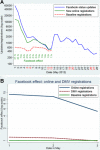Matching the Market for Heart Transplantation
- PMID: 27072859
- PMCID: PMC5458360
- DOI: 10.1161/CIRCHEARTFAILURE.115.002679
Matching the Market for Heart Transplantation
Abstract
Heart transplantation is the most effective therapy for patients with Stage D heart failure with a median life expectancy of ≈10 to 15 years. Unfortunately, many patients die on the waiting list hoping for a chance of survival. The life boat cannot rescue everyone. Over a decade, the donor pool has remained relatively stable, whereas the number of heart transplant candidates has risen. Potential recipients often have many comorbidities and are older because the criteria for heart transplantation has few absolute contraindications. Women, Hispanics, and patients with restrictive heart disease and congenital heart disease are more likely to die while awaiting heart transplantation than men, white patients, and those with either ischemic or dilated cardiomyopathy. To better match the market, we need to (1) increase the donor pool, (2) reduce the waitlist, and (3) improve the allocation system. This review article addresses all 3 options and compares strategies in the United States to those in other countries.
Keywords: health care; heart disease; heart failure; transplantation; ventricular assist device.
© 2016 American Heart Association, Inc.
Figures







References
-
- Lund LH, Edwards LB, Kucheryavaya AY, Dipchand AI, Benden C, Christie JD, Dobbels F, Kirk R, Rahmel AO, Yusen RD, Stehlik J. The registry of the international society for heart and lung transplantation: Thirtieth official adult heart transplant report--2013; focus theme: Age. J Heart Lung Transplant. 2013;32:951–964. - PubMed
-
- Stinson EB, Dong E, Jr., Schroeder JS, Harrison DC, Shumway NE. Initial clinical experience with heart transplantation. Am J Cardiol. 1968;22:791–803. - PubMed
-
- U.S. Department of Health and Human Services [June 19, 2015];Timeline of Historical Events Significant Milestones in Organ Donation and Transplantaton. Available at http://www.organdonor.gov/legislation/timeline.html.
-
- Mudge GH, Goldstein S, Addonizio LJ, Caplan A, Mancini D, Levine TB, Ritsch ME, Jr., Stevenson LW. 24th bethesda conference: Cardiac transplantation. Task force 3: Recipient guidelines/prioritization. J Am Coll Cardiol. 1993;22:21–31. - PubMed
-
- O'Connell JB, Bourge RC, Costanzo-Nordin MR, Driscoll DJ, Morgan JP, Rose EA, Uretsky BF. Cardiac transplantation: Recipient selection, donor procurement, and medical follow-up. A statement for health professionals from the committee on cardiac transplantation of the council on clinical cardiology, american heart association. Circulation. 1992;86:1061–1079. - PubMed
Publication types
MeSH terms
Grants and funding
LinkOut - more resources
Full Text Sources
Other Literature Sources
Medical

